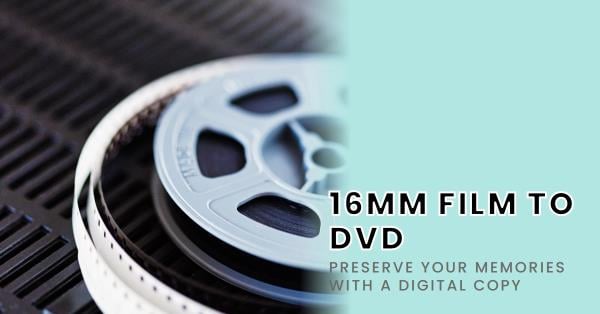
How to Convert 16mm Film for a Modern Look
Preserving and modifying traditional techniques of visual narrative is essential in the quickly evolving realm of digital media. While we embrace technical advancements, we may be able to contribute to closing the gap between the past and the present by carefully bringing 16mm film into the digital era. Not only technical proficiency but also an appreciation of the innate originality in every image are needed for such a sensitive endeavor. Professionals handling 16mm film transfer need to utilize specific equipment that is gentle on the film's delicate reels. The film is cleaned and, if needed, repaired to maintain its original appearance and feel before being digitized frame by frame at incredibly high resolutions. Subsequently, it undergoes advanced techniques for color correction to ensure that its inherent brightness is accurately captured in digital media. With considerable care taken to preserve the integrity of every frame, this conversion lets modern audiences enjoy old movies without sacrificing their historical significance for future generations.
Advice and Techniques for Converting 16mm Film Successfully
Choose the Right gear: When converting 16mm film, having the right gear is crucial. Make sure you have a high-quality film scanner, or consider working with a film transfer business. Your productions will benefit from precise and clear film capture thanks to this.
Clean and Prepare Your Films: Your 16mm films need to be well cleaned before you can start the conversion process. Particulate matter, dust, and dirt might affect the quality of the transferred footage. Use an anti-static brush or a soft microfiber cloth to gently clean any remaining particles from both sides of each frame.
Check for Damage: Over time, 16mm films may deteriorate or sustain damage due to improper storage conditions or normal wear and tear. Examine each reel carefully for signs of wear and tear, dents, or the growth of mold. If there are any damaged sections, consider consulting with a professional restoration business before transferring the data.
Adjust the color correction as needed. One advantage of digitizing your 16mm films is that, compared to traditional projection methods, you have more control over color correction. Make use of the software tools available to you to customize the color balance, brightness levels, and contrast ratios during the converting process.
Preserve Soundtracks (if applicable): In addition to images, the soundtracks of some 16mm films may convey treasured memories. Make sure the transfer method you choose accurately and without sacrificing quality captures these audio elements.
Remember that storing valuable memories intact is one of the long-term benefits of converting 16mm film! All you need is some time and meticulous attention to detail!
Bringing Back the Greats: The Potential of 4K Film Scanning
Explore the fascinating world of film's behind-the-scenes work, which brings stories to life. Imagine yourself admiring the beauty of your favorite classic films as they were intended to be seen. Everything that appeared unachievable is now possible thanks to 4K film scanning's remarkable potential.
Movies have always held a unique place in our hearts because of their capacity to evoke strong emotions and transport us to different eras and locations. Over time, as film quality declines, these masterpieces lose their inherent majesty. Discover how to use 4K film scanning to revive classic works of art.
With a resolution that is startlingly four times higher than standard high definition (HD), 4K offers unparalleled clarity and depth. Because every frame is meticulously scanned at a high quality, even the smallest details are flawlessly captured. Due to the painstaking restoration of every last detail, including the vivid colors and subtle textures, viewers can now appreciate these gems like never before.
A big part of cinematic history's appeal is that it should be preserved and made accessible to future generations. By digitizing these treasures utilizing state-of-the-art technology such as 4K film scanning, we ensure that they will stand the test of time and continue to captivate visitors long after they are gone.
Put on your seatbelts and get ready for a trip down memory lane as we examine in more detail how this amazing discovery paves the way for an amazing future in film while bringing back the beauty of classic movies!
Why Make the Switch to Digital Media?
In a world where things are changing rapidly, staying current is essential. The digital age has altered every aspect of our lives, including how we communicate and conduct business. So why should you switch to digital? I'll sketch you a portrait.
Imagine having instant access to information at your disposal, wherever you are in the world. Imagine being able to simply communicate with friends and family on a range of devices and share cherished experiences in real time. Imagine doing your entire business from the comfort of your home or while on the go, without the need for any physical office space at all.
There are countless benefits to utilizing digital technologies. Efficiency becomes second nature when tasks that once took hours may now be completed in minutes or even seconds. When people virtually interact to exchange ideas and accomplish shared goals, distance is no barrier to collaboration.
Reducing paper waste and implementing sustainable practices are other aspects of going digital that help reduce our carbon footprint. It empowers people by providing new opportunities for learning, growth, and business in a globalized society.
So why should you transfer to digital? The key is to stay up to date while simultaneously creating a wealth of chances for personal development and positively impacting society at large.
